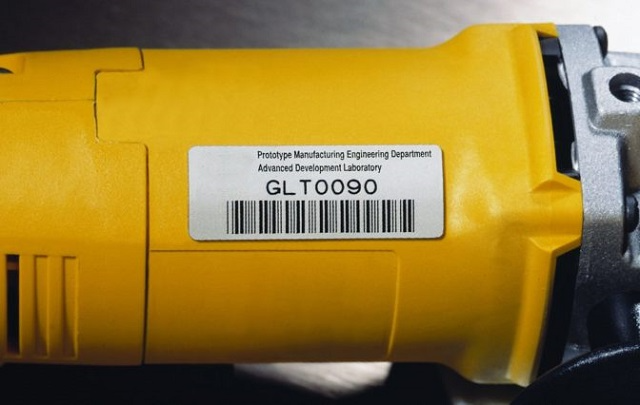6 Best Practices for Fixed Asset Tracking


Fixed asset tracking is a crucial process for every business. This process will help you monitor your business’ fixed assets better, such as buildings, equipment, land, lighting systems, and water systems. In addition to monitoring your fixed assets’ status, condition, and usage, it also aids in keeping track of their value over time.
Whether you are new to the concept of fixed asset tracking or you’re searching for a more comprehensive fixed asset tracking tool to the one you’re currently using, it’s important that you get acquainted with the most effective ways to go about the process.
In this post, we’ll provide some helpful tips to get you started on your business’ fixed asset tracking. Before we dive in, let’s review what fixed asset tracking is.

Fixed asset tracking is the process of monitoring and managing an organization’s physical assets, such as equipment, machinery, furniture, and other items that remain in place, in order to ensure that they are properly accounted for and utilized efficiently. This is crucial for businesses of all sizes, as fixed assets represent a significant portion of a company’s investment and capital.
Fixed asset tracking involves assigning unique identifiers to each asset, such as serial numbers or barcodes, and keeping detailed records of each asset’s location, condition, maintenance history, and depreciation. This information is typically stored in a centralized database or software system, allowing for easy access and retrieval when needed.
There are several benefits to implementing a fixed asset tracking system. Tracking fixed assets can help optimize asset utilization, reduce maintenance costs, and ensure compliance with regulatory requirements.
There are various methods and technologies available for fixed asset tracking, including manual tracking using spreadsheets, barcode scanning, RFID technology, and equipment tracking or asset tracking software. Each of these methods has its own advantages and limitations, depending on the size and complexity of the organization.
Read on to learn how fixed asset tracking will help boost your business’s efficiency and bottom line.
Today, there are various solutions that streamline fixed asset tracking, such as a robust asset tracking system, GPS devices for vehicles and moveable equipment, barcodes, and scanners. Utilizing tools like these helps to ensure your data is accurate, minimizing the human error common with manual asset tracking systems.
Choose a comprehensive asset tracking software solution that’s compatible with your asset tracking labels and practices. Some asset tracking software vendors offer specialized solutions tailored to the needs of various industries and use cases.
One of the biggest mistakes that businesses make is confusing the practices of fixed asset tracking with inventory management. However, fixed asset tracking is a distinct process that involves tracking different information compared to inventory tracking.
Fixed asset tracking involves monitoring and managing long-term assets that a company owns, such as equipment, machinery, vehicles, and property. These assets are typically not intended for sale and are crucial for the company’s day-to-day operations.
Fixed asset tracking helps organizations keep track of their assets, determine their value, and ensure they are properly maintained.
On the other hand, inventory management focuses on monitoring and controlling the flow of goods in and out of a company. This includes raw materials, finished products, and goods for sale.
Inventory management helps organizations avoid stockouts, prevent overstocking, and streamline logistics processes to ensure efficient operations.
As you can see, these are two entirely different sets of data that hold two entirely different sets of goals.

Labeling and tagging assets with unique identifiers, such as barcode labels or RFID tags, can streamline the asset tracking process. This makes it easy to scan and track assets as they move throughout your organization, reducing the likelihood of errors or discrepancies in your records.
When considering asset tags and labels, consider the operating environment of your equipment or the environmental conditions your assets are exposed to. Choosing durable asset labels that can withstand these conditions is key.
For example, heavy equipment that’s exposed to outdoor elements requires an asset tag that can withstand UV exposure, high temperatures, and corrosion. Manufacturers, on the other hand, require asset labels that can withstand abrasion, chemicals and solvents, and UV exposure.
Metalphoto® photosensitive anodized aluminum is the material of choice for such applications, providing resistance to corrosion, sunlight degradation, abrasion, extreme temperatures, and chemical exposure. Durable asset tags can last the lifespan of your equipment, meaning you won’t need to reinvest the money or time to re-label your assets multiple times throughout their useful life. Rigid Metalphoto® Labels, for instance, have an expected exterior lifespan of more than 20 years.
Next, it’s imperative to create a fixed asset database, or a central repository that includes up-to-date information about all of your fixed assets. Utilizing a software solution specifically designed for fixed asset tracking can greatly simplify the process.
These systems allow you to input all relevant information about each asset, including purchase date, cost, depreciation, location, and maintenance history. This centralized system makes it easy to track and manage assets across multiple locations.
On the other hand, if you’re using a manual system like a spreadsheet, you must rely on your employees to regularly record notes about each asset, which can be time-consuming. Your asset data can quickly become outdated as team members neglect to record relevant information.
With an asset tracking software solution, your fixed assets are labeled with barcode tags or equipment labels that employees can easily scan to retrieve and document data about the asset. This is far less time-consuming, making your team more productive.

Every asset has a lifecycle of its own. Perhaps you invested in a piece of pricey equipment five years ago that was necessary and useful at the time.
However, the equipment’s technology is now outdated and slowing down the pace of production—or is not being used at all. That is an example of a fixed asset that is at the end of its life cycle.
Take a look at the costs, opportunities, and risks associated with your fixed assets. This data informs key decisions, such as whether it makes sense to decommission an asset and invest in a replacement or incur the costs of a repair or improvement.
It’s important to periodically conduct physical audits of your fixed assets to verify their existence and condition. This can help prevent loss due to theft or misplacement and ensure that all assets are properly accounted for in your records.
Audits should be conducted on a regular basis. Larger organizations typically opt for semi-annual or annual audits.
By implementing these best practices for fixed asset tracking, organizations can improve efficiency, reduce the risk of loss, and maintain accurate financial records. Effective asset tracking is essential for overall organizational success and can have a significant impact on the bottom line.
Tracking fixed assets is important to ensure accurate financial reporting, optimize asset utilization, prevent loss or theft, schedule maintenance, and make informed business decisions. Proper asset tracking helps in managing depreciation, complying with regulations, and enhancing operational efficiency.
An example of a fixed asset is a piece of machinery used in a manufacturing plant. Other examples include buildings, vehicles, furniture, and computer equipment, which are all tangible items that a company uses in its operations and expects to last more than one year.
Fixed assets are often collectively referred to as PPE, an acronym for Property, Plant, and Equipment:
A fixed asset is a long-term tangible piece of property or equipment that a business owns and uses in its operations to generate income. To qualify as a fixed asset, it must have a useful life of more than one year, be used in the business’s operations, and not be intended for resale in the regular course of business.
Our sales engineers are experts in automatic asset tracking, tagging and identification,a nd can answer all your questions. Get in touch now.
Lets Talk ›Enter your information and get a free checklist of the top questions to answer and tips to plan a successful asset tagging project for any asset management or tracking system implementation.